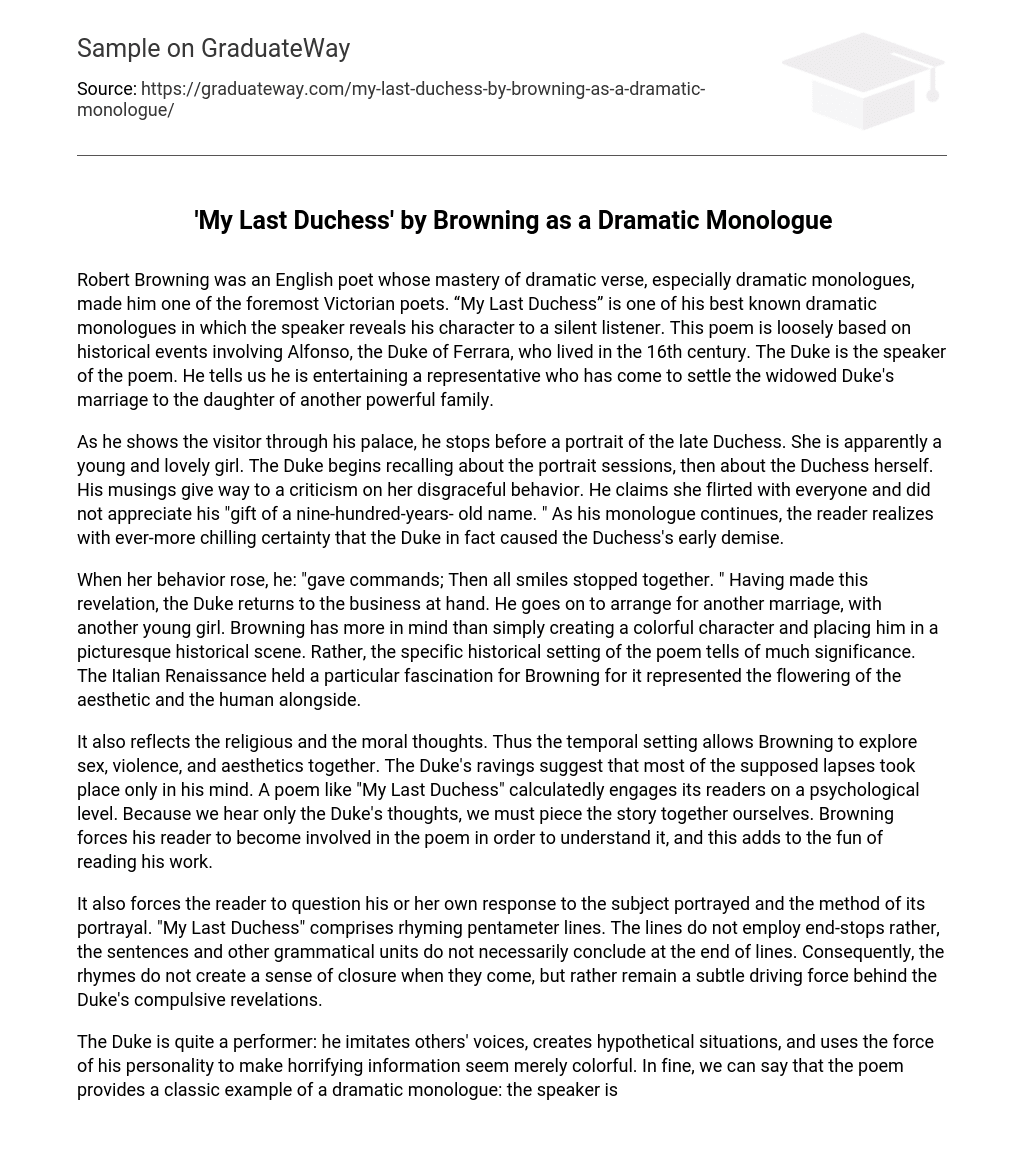Robert Browning, an English poet, was renowned for his skill in writing dramatic verse, particularly dramatic monologues. One of his most famous works in this genre is “My Last Duchess,” where the speaker divulges his personality to a quiet listener. This poem draws inspiration from real-life occurrences featuring the Duke of Ferrara, Alfonso, who resided during the 16th century. The Duke assumes the role of the poem’s speaker as he informs us about his current engagement with a representative aiming to arrange his remarriage to the daughter of a prominent family.
During a tour of his palace, the Duke pauses to show the visitor a painting of the deceased Duchess. The portrait depicts her as a beautiful young girl. The Duke reminisces about the art sessions and begins talking about the Duchess’s personality. However, his thoughts soon turn into a disapproving critique of her behavior, claiming that she flirted with everyone and did not value his prestigious family name, which has existed for centuries. As the Duke’s monologue progresses, it becomes increasingly evident and unsettling that he played a role in the Duchess’s untimely death.
When her behavior rose, the Duke gave commands and then all smiles stopped together. After revealing this, the Duke continues with his tasks and arranges another marriage with a young girl. Browning’s intention goes beyond creating a vivid character in a historical setting. Instead, the specific time period of the Italian Renaissance holds great significance as it represents the development of aesthetics and humanity.
The poem “My Last Duchess” by Browning reflects both religious and moral thoughts while also exploring topics of sex, violence, and aesthetics. The temporal setting of the poem allows Browning to delve into these themes. The Duke’s ravings indicate that the supposed lapses occurred mostly in his own mind. By only presenting the Duke’s thoughts, the poem engages readers on a psychological level, forcing them to piece together the story. Browning’s work requires reader involvement for understanding, adding to the enjoyment of reading his poetry.
The use of rhyming pentameter lines in “My Last Duchess” makes the reader question their reaction to the subject and how it is portrayed. Unlike traditional poetry, the lines do not end with appropriate punctuation. This lack of closure in the rhymes serves as a constant reminder of the Duke’s unrestrained admissions.
The Duke exemplifies dramatic monologue in the poem as he imitates voices, constructs hypothetical situations, and uses his forceful personality to downplay disturbing information. Ultimately, the poem’s main objective is to unveil the Duke’s character. The poem follows a classic format, differentiating the speaker from the poet and alluding to an audience that remains unseen throughout.





